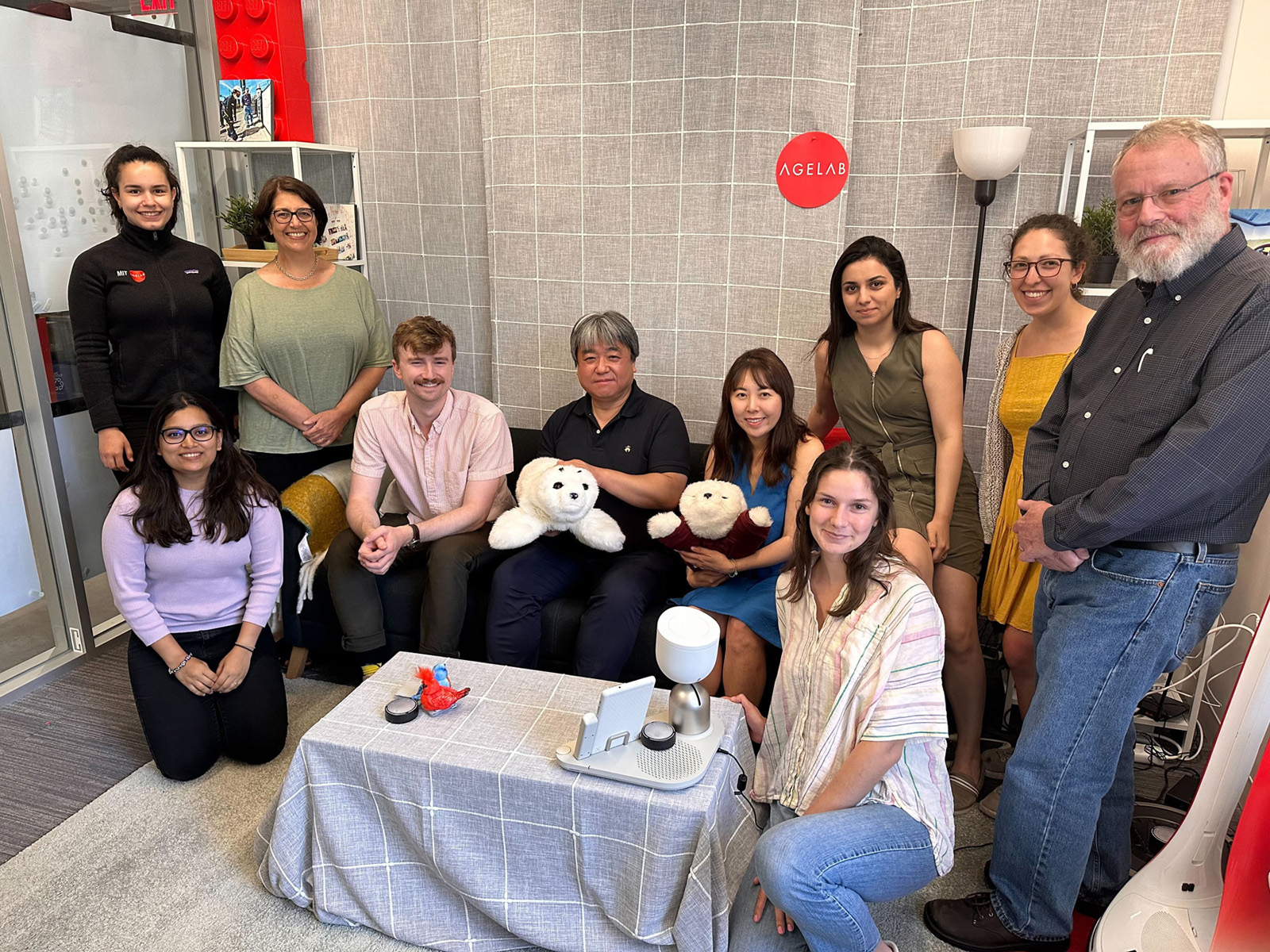Takanori Shibata, PARO Inventor, Presents at AgeLab
Dr. Takanori Shibata, Chief Senior Research Scientist of the National Institute of Advanced Industrial Science and Technology (AIST), Japan, and inventor of the advanced interactive robot PARO, recently visited the AgeLab to meet with researchers and give an AgeLab Science Lunch presentation about PARO.
PARO is an animal therapy robot designed to look like a baby harp seal. The decision for PARO to look like a seal avoids its users comparing the robot unfavorably to familiar live animals like a dog or cat. When active, PARO coos for attention and responds to voice and touch. For over a decade, Two PAROs have resided at the AgeLab as example cases for how new technologies might impact quality of life in older age.
During his presentation, Dr. Shibata described how PARO has been used by different users, ranging from an empty-nester couple in Japan who had recently lost a family pet, a group of ill children in a pediatric ICU setting, and a group of older veterans living with PTSD.
Research has suggested that PARO can improve mood, motivation, anxiety, depression, pain, insomnia, and agitation for people of all ages, with use cases in care and facility settings as well as in peoples’ homes.
Dr. Shibata discussed clinical trials that have qualified PARO as a psychophysiological biofeedback device in many countries, including the United States, the United Kingdom, Australia, and more. As a result of this medical designation, PARO can be prescribed for "psychophysiological biofeedback therapy" in the United States, and costs can be reimbursed by national and private medical insurance plans such as Medicare.
Dr. Shibata shared technical and design details about the iterative development process of PARO, and how each of the eight generations of PARO have differed from the last. Even small details of PARO's design are intentional. For example, PARO’s soft artificial fur coat is treated with antibacterial and antiviral agents so that it can be used safely and shared in facilities with strict health and safety guidelines.
Dr. Shibata also discussed some differences in how people across cultures utilize PARO. For example, in the United States, PARO is designated as a medical device and therefore primarily used in medical settings. Conversely, in Japan, PARO tends to be used more for companionship for individuals in home settings.
Dr. Shibata is a former visiting research scientist at the MIT Artificial Intelligence Lab and a former visiting fellow at the MIT AgeLab.

